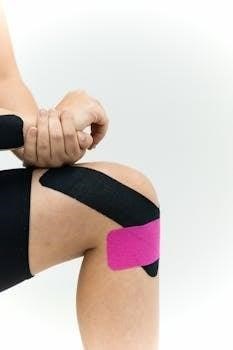Physiotherapeutic Scoliosis Specific Exercises (PSSE)
Physiotherapeutic Scoliosis Specific Exercises, or PSSE, encompass various methods for managing scoliosis. These exercises focus on self-care and ergonomics, promoting symmetrical body use. They aim to build balance, strength, and flexibility, and are often used alongside bracing. PSSE includes curve-specific exercises, 3D auto-correction, self-elongation, and Activities of Daily Living training.
Curve Pattern Specific Exercises
Curve pattern specific exercises are a cornerstone of Physiotherapeutic Scoliosis Specific Exercises (PSSE). These targeted movements are tailored to address the unique curvature patterns of each individual’s scoliosis. The exercises aim to correct the spinal rotation and lateral deviation associated with scoliosis by focusing on the specific location and direction of the curve. Different types of scoliosis, such as thoracic or lumbar, require different exercise approaches. For example, a right thoracic curve will necessitate exercises that are different from those used for a left lumbar curve. Exercises may include stretches and strengthening movements designed to address the concavity and convexity of the curve. They might involve lateral shifts, reaching movements, and specific breathing techniques, such as Rotational Angular Breathing (RAB), to target the affected vertebrae and rib cage. The goal is to create a balanced pull on the spine, reducing the curve and promoting more symmetrical alignment. It’s also about regaining trunk alignment by focusing on the specific muscle groups that are affected by the curvature. The exercises should be performed carefully and with proper technique to maximize their effectiveness and avoid injury, often under the guidance of a trained therapist certified in methods like Schroth or SEAS.
3D Auto-correction and Self-Elongation
3D auto-correction and self-elongation are vital components of Physiotherapeutic Scoliosis Specific Exercises (PSSE), focusing on actively correcting the spinal curvature in three dimensions. Unlike traditional exercises that might only address one plane of movement, these techniques involve conscious efforts to de-rotate, de-lateroflex, and decompress the spine. 3D auto-correction is about actively engaging muscles to counter the specific rotational and lateral forces causing the scoliosis. This means that the patient must become aware of their curvature and learn how to move against it. Self-elongation, in contrast, involves lengthening the spine to reduce the compression and improve posture. The process may include specific stretches and postural adjustments, often combined with breathing techniques. The individual must learn how to actively lengthen their spine, creating space between the vertebrae and reducing the curve. These actions work together, promoting spinal alignment and improving the overall posture. Patients are taught how to maintain this corrected posture during daily activities. This approach aims to create sustainable changes in spinal alignment. These techniques are not passive; they require active patient participation and awareness to achieve optimal results.
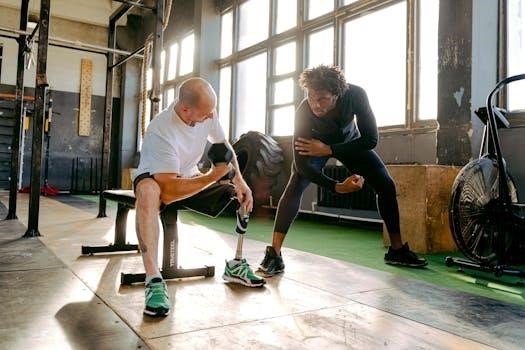
Activities of Daily Living (ADL) Training
Activities of Daily Living (ADL) training is a crucial aspect of Physiotherapeutic Scoliosis Specific Exercises (PSSE), extending the benefits of targeted exercises into everyday life. This training focuses on integrating scoliosis-specific corrections into routine activities, ensuring that improved posture and body mechanics are maintained throughout the day. ADL training involves educating patients on how to perform common tasks, such as sitting, standing, walking, lifting, and reaching, while consciously maintaining spinal alignment. It emphasizes body awareness and the application of self-correction techniques learned in therapy sessions. This includes maintaining proper posture while working at a desk, using ergonomic techniques while lifting objects, and being mindful of alignment when engaging in recreational activities. The goal is to make corrected posture a habit rather than a conscious effort. This integration of corrected posture into daily life minimizes the chances of reverting to poor postural habits that contribute to the progression of scoliosis. ADL training also addresses any limitations or pain associated with scoliosis, providing strategies to manage symptoms and improve functionality. It empowers individuals to take control of their condition and make informed choices about how they move and interact with their environment, ultimately leading to better long-term outcomes.
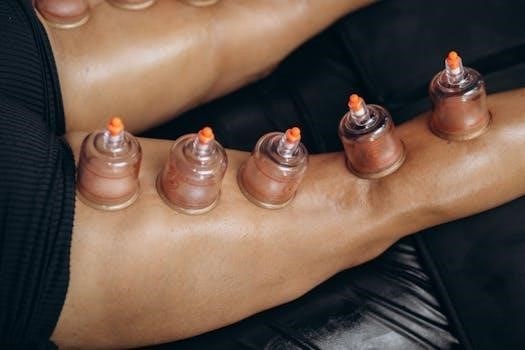
Different PSSE Schools
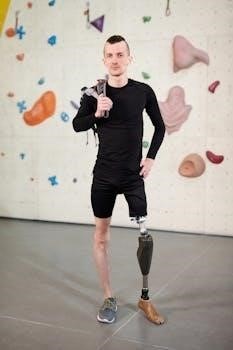
Several schools offer Physiotherapeutic Scoliosis Specific Exercises (PSSE). These include the Schroth Method from Germany, the Scientific Exercise Approach to Scoliosis (SEAS) Method from Italy, and others like BSPTS, FITS, Side-Shift and Lyon methods. Each school has a unique approach to scoliosis treatment.
Schroth Method (Germany)
The Schroth Method, originating in Germany, is a specialized approach for scoliosis treatment. It focuses on three-dimensional correction of the spinal curve using specific exercises. These exercises aim to derotate, deflex, and elongate the spine, addressing the underlying postural imbalances caused by scoliosis. The method employs rotational angular breathing, or RAB, to expand collapsed areas of the rib cage during inhalation while stabilizing the corrected posture during exhalation. The Schroth method is individualized and seeks to improve aesthetics, reduce pain, and enhance the overall quality of life for individuals with scoliosis. It uses exercises that promote symmetry within the spine to regain trunk alignment. Certified practitioners guide patients through a series of exercises tailored to their specific curve pattern. The method is also used for adult scoliosis, and is considered a part of the Physiotherapeutic Scoliosis Specific Exercises (PSSE); Furthermore, this method is used in a biweekly physical therapy program. Importantly, scoliosis specific exercises should never replace bracing when bracing is indicated.
Scientific Exercise Approach to Scoliosis (SEAS) Method (Italy)
The Scientific Exercise Approach to Scoliosis, or SEAS, method is an Italian approach to scoliosis management. It is an individualized exercise program adapted to all situations of conservative treatment; The SEAS method is a constantly evolving approach based on the latest research and findings. It emphasizes active self-correction exercises, focusing on the patient’s ability to actively improve their posture and spinal alignment. This approach aims to empower patients by teaching them how to use their bodies symmetrically. The SEAS program is characterized by continuous adjustments based on the results published in the literature. It is particularly known for its considerable and cutting-edge clinical expertise, especially in the rehabilitation treatment of scoliosis. The SEAS method is used by Isico, an organization founded in 2003. The program is tailored to the patient’s unique needs and curve pattern, promoting symmetry within the spine to regain trunk alignment. The SEAS method is also considered a part of the Physiotherapeutic Scoliosis Specific Exercises (PSSE), and helps patients learn to use their bodies correctly.
Bracing and Scoliosis Specific Exercises
Bracing is often recommended to prevent the worsening of scoliosis, and is a non-operative intervention used alongside scoliosis specific exercises. These exercises should never replace bracing when bracing is indicated. There’s evidence suggesting that both bracing and scoliosis specific exercises can reduce curve progression to the point of avoiding surgery. While the effectiveness of bracing alone is sometimes questioned, research shows that exercises have positive effects on patients with idiopathic scoliosis. Some physical therapists recommend braces like the Milwaukee brace. It’s essential to remember that scoliosis-specific exercises are most effective when performed with proper technique and under the guidance of a specialist. The combination of bracing and exercises aims to promote symmetry within the spine and regain trunk alignment. The exercises help to address muscle imbalances, improve posture, and encourage proper spinal alignment. This combined approach is a comprehensive way to manage scoliosis and enhance patient outcomes. The goal is to slow the progression of the spinal curve during growth and improve functionality.
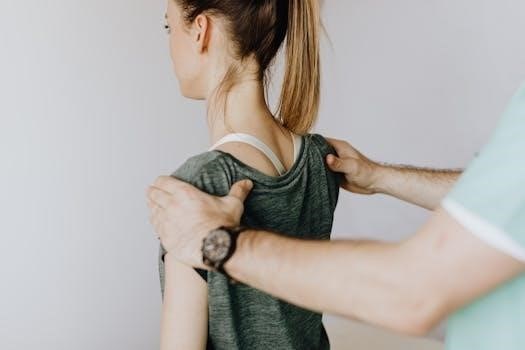
Core Strengthening and Proprioception
Core strengthening and proprioception are vital in scoliosis management. Exercises focus on building core strength for better stability. Proprioception improves body awareness and balance. These aspects promote symmetry and alignment, enhancing overall posture for those with scoliosis.
Rotational Angular Breathing (RAB)
Rotational Angular Breathing, or RAB, is a core component of many Physiotherapeutic Scoliosis Specific Exercise (PSSE) programs. This breathing technique is designed to create forces that can help to derotate the vertebrae and rib cage, which are often misaligned in scoliosis. During RAB, the individual focuses on expanding the collapsed areas of the rib cage during inhalation, actively working to open up these compressed spaces. Conversely, during exhalation, the individual works to stabilize the correction and expansion that was achieved during inhalation. This process is crucial for promoting symmetrical movement and alignment within the spine; The technique requires a conscious effort to engage the muscles of the core and back, ensuring the forces are directed appropriately. The aim is to reduce the rotational component of scoliosis, as well as to improve spinal mobility and trunk control. RAB is not just about breathing; it’s a controlled movement that actively contributes to the correction of the spinal curve. It may also help with pain reduction, aesthetics, and overall quality of life improvement. Individuals are taught to perform RAB as a regular exercise and often incorporate it into other scoliosis exercises.
Symmetry and Trunk Alignment
Symmetry and trunk alignment are central goals in scoliosis rehabilitation exercises. The aim is to counteract the spinal curvature characteristic of scoliosis and to promote a more balanced posture. Exercises are designed to address imbalances in muscle strength, flexibility, and posture that can contribute to or exacerbate scoliosis. Achieving symmetry involves working to balance the muscles on either side of the spine, strengthening weaker muscles and stretching tight ones. This approach helps to reduce the lateral deviation of the spine and create a more aligned trunk. The exercises focus on restoring the body’s natural alignment through conscious efforts to reposition the pelvis, shoulders, and rib cage. This corrective work often includes specific movements that target the concavity and convexity of the curve, aiming to reduce the rotational component. Improving trunk alignment is about more than just aesthetics; it can also help to alleviate pain, improve breathing mechanics, and enhance overall body function. These exercises are not just about correcting the spine but about teaching individuals how to use their bodies more symmetrically in daily life. They encourage active participation in the rehabilitation process, promoting long-term maintenance of improved trunk alignment.
